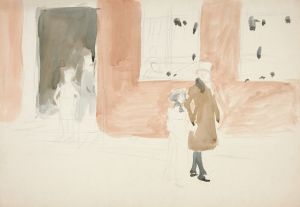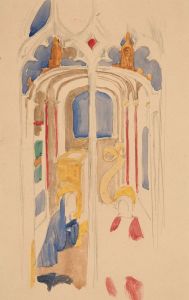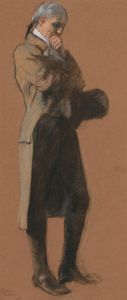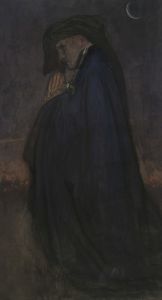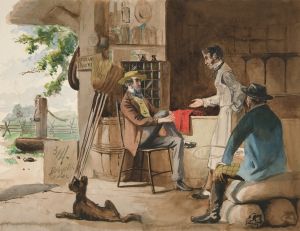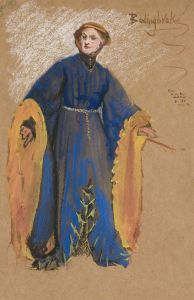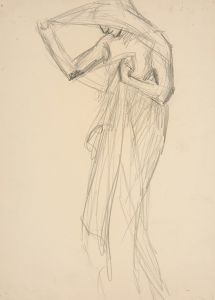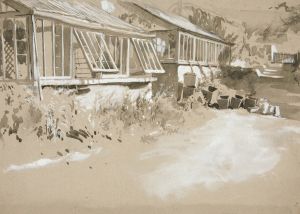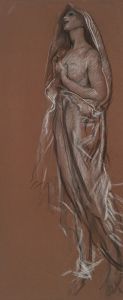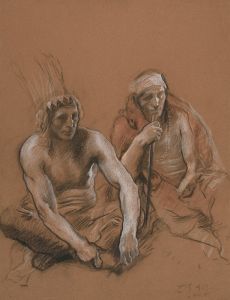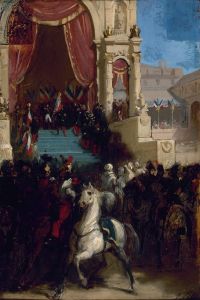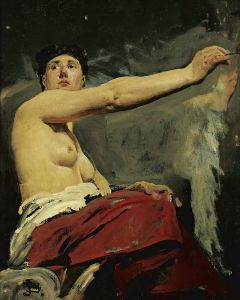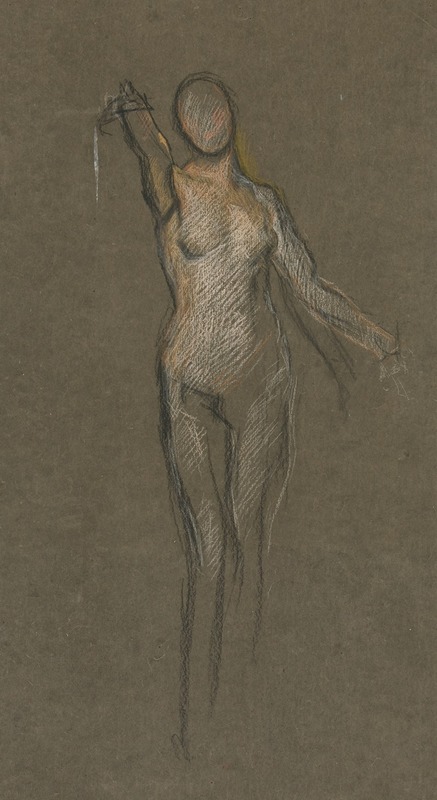
Study for central figure in ‘Spirit of Religious Liberty…guiding the ships’ mural at the state capitol building in Harrisburg, Pennsylvania
A hand-painted replica of Edwin Austin Abbey’s masterpiece Study for central figure in ‘Spirit of Religious Liberty…guiding the ships’ mural at the state capitol building in Harrisburg, Pennsylvania, meticulously crafted by professional artists to capture the true essence of the original. Each piece is created with museum-quality canvas and rare mineral pigments, carefully painted by experienced artists with delicate brushstrokes and rich, layered colors to perfectly recreate the texture of the original artwork. Unlike machine-printed reproductions, this hand-painted version brings the painting to life, infused with the artist’s emotions and skill in every stroke. Whether for personal collection or home decoration, it instantly elevates the artistic atmosphere of any space.
"Study for central figure in ‘Spirit of Religious Liberty…guiding the ships’ mural at the state capitol building in Harrisburg, Pennsylvania" is a preparatory work by Edwin Austin Abbey, an American artist renowned for his murals and illustrations. This study was created as part of Abbey's extensive contributions to the Pennsylvania State Capitol, where he was commissioned to produce a series of murals celebrating themes of governance, liberty, and the state's historical significance.
The central figure in this study represents the allegorical concept of "Religious Liberty," a theme that reflects the foundational principles of Pennsylvania, particularly its establishment as a haven for religious freedom under William Penn. The figure is depicted as a guiding force, symbolizing the moral and spiritual ideals that underpin the state's identity. In the larger mural, this allegorical figure is shown leading ships, which are often interpreted as a metaphor for the journey of settlers seeking freedom and opportunity in the New World.
Abbey's work on the Pennsylvania State Capitol murals began in the early 20th century, following his commission in 1902. The murals were part of a broader artistic program to adorn the capitol building, which was designed by architect Joseph Miller Huston. Abbey's contributions included several large-scale works that combined historical and allegorical elements, showcasing his mastery of composition, symbolism, and narrative.
The study itself demonstrates Abbey's meticulous approach to his craft. He often created detailed preparatory sketches and studies to refine his ideas and compositions before executing the final murals. These studies provide insight into his creative process and his dedication to achieving both artistic and thematic coherence in his work.
Edwin Austin Abbey passed away in 1911 before completing all of his planned murals for the capitol. Despite his untimely death, his completed works remain a significant part of the building's artistic legacy. The "Spirit of Religious Liberty" mural, along with its preparatory studies, continues to be appreciated for its artistic merit and its embodiment of the ideals that shaped Pennsylvania's history.
This study, like many of Abbey's works, reflects the broader cultural and historical context of its time, emphasizing themes of liberty, progress, and the pursuit of higher ideals. It remains an important example of early 20th-century American mural art and a testament to Abbey's skill as an artist and storyteller.





